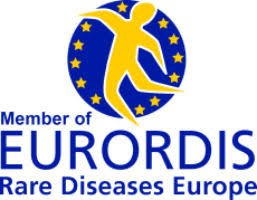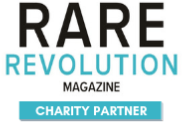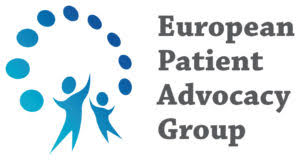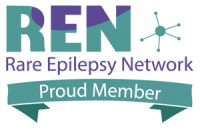About this safeguarding policy
Name of Policy: Safeguarding Policy
Date: 24/07/2023
Safeguarding Officer: Lydia Hirst
Purpose
Our charitable activities include working with vulnerable people. The purpose of this policy is to protect them and provide stakeholders and the public with the overarching principles that guide our approach in doing so.
Applicability
This policy applies to anyone working on our behalf, including our trustees and other volunteers.
Partner organisations will be required to have their own safeguarding procedures that must, as a minimum, meet the standards outlined below, and include any additional legal or regulatory requirements specific to their work. These include, but are not limited to other UK regulators, if applicable.
Safeguarding should be appropriately reflected in other relevant policies and procedures.
Principles
We believe that:
- Nobody who is involved in our work should ever experience abuse, harm, neglect or exploitation.
- We all have a responsibility to promote the welfare of all of our beneficiaries, staff and volunteers, to keep them safe and to work in a way that protects them.
- We all have a collective responsibility for creating a culture in which our people not only feel safe, but also able to speak up, if they have any concerns.
Types of Abuse
Abuse can take many forms, such as physical, psychological or emotional, financial, sexual or institutional abuse, including neglect and exploitation. Signs that may indicate the different types of abuse are at Appendix 1.
Reporting Concerns
If a crime is in progress, or an individual in immediate danger, call the police, as you would in any other circumstances.
If you are a beneficiary, or member of the public, make your concerns known to a member of our team, who will alert a senior staff member or Trustee of the charity.
For staff members, trustees or volunteers of the charity, make your concerns known to your supervisor, or speak to a trustee.
The trustees are mindful of their reporting obligations to the Charity Commission in respect of Serious Incident Reporting and, if applicable, other regulator. They are aware of the Government guidance on handling safeguarding allegations.
Responsibilities
Responsibilities of Trustees
This safeguarding policy will be reviewed and approved by the Board annually.
Trustees are aware of and will comply with the Charity Commission guidance on safeguarding and protecting people and also the 10 actions trustee boards need to take to ensure good safeguarding governance.
A lead trustee will be given responsibility for the oversight of all aspects of safety, including whistleblowing and Health and Safety at Work. This will include:
- Creating a culture of respect, in which everyone feels safe and able to speak up.
- An annual review of safety, with recommendations to the Board.
- Receiving regular reports, to ensure this and related policies are being applied consistently.
- Providing oversight of any lapses in safeguarding.
- And ensuring that any issues are properly investigated and dealt with quickly, fairly and sensitively, and any reporting to the Police/statutory authorities is carried out.
- Leading the organisation in way that makes everyone feels safe and able to speak up.
- Ensuring safeguarding risk assessments are carried out and appropriate action taken to minimise these risks, as part of our risk management processes.
- Ensuring that all relevant checks are carried out in recruiting staff and volunteers.
- Planning programmes/activities to take into account potential safeguarding risks, to ensure these are adequately mitigated.
- Ensuring that all appointments that require DBS clearance and safeguarding training are identified, including the level of DBS and any training required.
- Ensuring that a central register is maintained and subject to regular monitoring to ensure that DBS clearances and training are kept up-to-date.
- Ensuring that safeguarding requirements (eg DBS) and responsibilities are reflected in job descriptions, appraisal objectives and personal development plans, as appropriate.
- Listening and engaging, beneficiaries, staff, volunteers and others and involving them as appropriate.
- Responding to any concerns sensitively and acting quickly to address these.
- Ensuring that personal data is stored and managed in a safe way that is compliant with data protection regulations, including valid consent to use any imagery or video.
- Making staff, volunteers and others aware of:
- Our safeguarding procedures and their specific safeguarding responsibilities on induction, with regular updates/reminders, as necessary.
- The signs of potential abuse and how to report these.
Responsibilities of Everyone
To be aware of our procedures, undertake any necessary training, be aware of the risks and signs of potential abuse and, if you have concerns, to report these immediately (see above).
Fundraising
We will ensure that:
- We comply with the Code of Fundraising Practice, including fundraising that involves children.
- Staff and volunteers are made aware of the Chartered Institute of Fundraising guidance on keeping fundraising safe and the NCVO Guidance on vulnerable people and fundraising.
- Our fundraising material is accessible, clear and ethical, including not placing any undue pressure on individuals to donate.
- We do not either solicit nor accept donations from anyone whom we know or think may not be competent to make their own decisions.
- We are sensitive to any particular need that a donor may have.
Online Safety
We will identify and manage online risks by ensuring:
- Volunteers, staff and trustees understand how to keep themselves safe online. You could use high privacy settings and password access to meetings to support this
- The online services you provide are suitable for your users. For example, use age restrictions and offer password protection to help keep people safe
- The services we use and/or provide are safe and in line with our code of conduct.
- Protect people’s personal data and follow UK GDPR legislation.
- We have permission to display any images on our website or social media accounts, including consent from an individual, parent, etc.
- We clearly explain how users can report online concerns. Concerns may be reported using this policy, or direct to a social media provider using their reporting process. If you are unsure, you can contact one of these organisations, who will help you.
Working With Other Organisations
In working with other organisations, including any collaborative projects, we will comply with Charity Commission guidance by carrying out relevant due diligence and having a written agreement that sets out:
- Our relationship.
- The role of each organisation.
- Monitoring and reporting arrangements.
Version Control – Approval and Review
Version No | Approved By | Approval Date | Main Changes | Review Period |
1.0 | Board | 24/07/2023 | Policy approved | Annually |
|
|
|
|
|
|
|
|
|
|
Statutory Guidance
Gov.UK – The role of other agencies in safeguarding
CC: Infographic; 10 actions trustees need to take.
CC: Safeguarding duties of charity trustees
CC: Safeguarding – policies and procedures
CC: How to protect vulnerable groups
CC: Managing online risk.
Useful Links
NCVO: Online safeguarding resources.
NSPCC: Writing a safeguarding policy
Appendix 1 – Signs of Abuse
Physical Abuse
- bruises, black eyes, welts, lacerations, and rope marks.
- broken bones, open wounds, cuts, punctures, untreated injuries in various stages of healing.
- broken eyeglasses/frames, or any physical signs of being punished or restrained.
- laboratory findings of either an overdose or under dose medications.
- individual’s report being hit, slapped, kicked, or mistreated.
- vulnerable adult’s sudden change in behaviour.
- the caregiver’s refusal to allow visitors to see a vulnerable adult alone.
Sexual Abuse
- bruises around the breasts or genital area.
- unexplained venereal disease or genital infections.
- unexplained vaginal or anal bleeding.
- torn, stained, or bloody underclothing.
- an individual’s report of being sexually assaulted or raped.
Mental Mistreatment/Emotional Abuse
- being emotionally upset or agitated.
- being extremely withdrawn and non-communicative or non-responsive.
- nervousness around certain people.
- an individual’s report of being verbally or mentally mistreated.
Neglect
- dehydration, malnutrition, untreated bed sores and poor personal hygiene.
- unattended or untreated health problems.
- hazardous or unsafe living condition (e.g., improper wiring, no heat or running water).
- unsanitary and unclean living conditions (e.g., dirt, fleas, lice on person, soiled bedding, faecal/urine smell, inadequate clothing).
- an individual’s report of being mistreated.
Self-Neglect
- dehydration, malnutrition, untreated or improperly attended medical conditions, and poor personal hygiene.
- hazardous or unsafe living conditions.
- unsanitary or unclean living quarters (e.g., animal/insect infestation, no functioning toilet, faecal or urine smell).
- inappropriate and/or inadequate clothing, lack of the necessary medical aids.
- grossly inadequate housing or homelessness.
- inadequate medical care, not taking prescribed medications properly.
Exploitation
- sudden changes in bank account or banking practice, including an unexplained withdrawal of large sums of money.
- adding additional names on bank signature cards.
- unauthorized withdrawal of funds using an ATM card.
- abrupt changes in a will or other financial documents.
- unexplained disappearance of funds or valuable possessions.
- bills unpaid despite the money being available to pay them.
- forging a signature on financial transactions or for the titles of possessions.
- sudden appearance of previously uninvolved relatives claiming rights to a vulnerable adult’s possessions.
- unexplained sudden transfer of assets to a family member or someone outside the family.
- providing services that are not necessary.
- individual’s report of exploitation.








